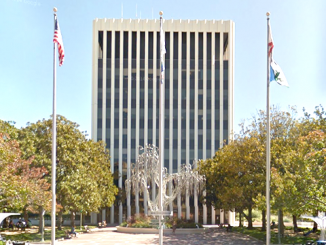
BY ELAINE GOODMAN
Daily Post Correspondent
The good economic times continue to roll for the city of Mountain View, which posted a $99.5 million surplus for the fiscal year that ended June 30, according to a new report.
That follows a city surplus of $104 million in the previous fiscal year, according to the city’s Comprehensive Annual Financial Report, or CAFR. The report will be presented to the City Council during a study session Tuesday (Nov. 27).
Fees charged to developers were one major source of the latest surplus, City Manager Dan Rich and Finance Director Patty Kong said in the report.
“Property taxes have also increased as property values remain strong with increases in the median price of homes, changes in ownership and new development added to the tax roll,” the report said.
In terms of development, the city saw about 355,277 square feet of commercial or office space completed during the fiscal year. In addition, 1,099 residential units were approved and “significant additional housing is in the pipeline,” the report said.
“The local economy continues to be strong, with research and development and industrial sectors experiencing occupancy gains,” the report said. “However, office vacancy rates have started to rise, although still relatively low.”
Recession expected
And Mountain View officials aren’t expecting the positive economic trends to last forever. The city’s financial forecasts are anticipating a recession within the next 10 years.
Mountain View’s $99.5 million surplus in the last fiscal year is the difference between its revenue for the 12-month period and its expenses over the same time. The figure includes a $73.8 million surplus within the city’s governmental funds plus a $25.7 million surplus for “business-type activities,” in which users pay for a service, such as sewer service. The CAFR refers to the surplus as the city’s “change in net position” for the year.
City revenues will be getting a further boost through two tax measures that Mountain View voters apparently approved on Nov. 6. Measure P, a per-employee “head tax” on businesses in town, will raise an estimated $6 million a year. Measure Q, a tax on cannabis businesses, is expected to bring in another $1 million a year.
The hefty surplus may be viewed as a sign of financial strength for the city. The report notes that Mountain View has a AAA credit rating from Standard & Poor’s.
Others might wonder whether some of the surplus should have been spent to accomplish the city’s goals. The City Council set as its top priorities for the current two-year period protecting vulnerable populations and preserving the city’s socioeconomic diversity; increasing the supply of affordable housing; expanding transportation options; and promoting environmental sustainability.
Surpluses may raise questions about whether the funds should be used to award bonuses to city employees, or to reduce fees charged to residents. That issue is currently being debated in San Carlos.
Pension costs
Another potential use of surpluses is paying down shortfalls in what cities will need to cover employee pensions. Mountain View’s surplus of $99.5 million comes after the city made an additional pension contribution of $12.4 million last fiscal year to the California Public Employees’ Retirement System, or CalPERS. The city’s pension gap as of June 2017 was $230 million, according to the CAFR.
Mountain View’s surplus of $104 million for the 2017 fiscal year, which ended June 30, 2017, was the largest among eight Peninsula cities included in a Daily Post analysis in January. It remains to be seen how the city ranks among its neighbors for the 2018 fiscal year, which ended June 30 of this year, as other cities are in the process of completing their CAFRs.
The city of Los Altos has released its CAFR for the 2018 fiscal year, reporting a surplus of $4.5 million. Los Altos’ surplus for the 2017 fiscal year was $7.2 million.
In Palo Alto, the City Council Finance Committee is tentatively scheduled to review the 2018 CAFR on Dec. 4.




Of course even with all that money they will still find some reason to not paint over the pink walls of city hall and remove the wasps nests all around, typical bureaucrats.
Ken, the building isn’t actually pink, it just looks that way in the photo because of how light is reflecting off of it. Not sure about the wasp nests.
it is actually pink. this is not an optical illusion
These bureaucrats are obviously on the take of big honey and the wasp nest industrial complex.
Also, what?
With that much money—and for two years in a row—you’d think they’d be doing a better job building affordable housing. But I know what they’ll say—our salaries and pensions come first.
With such a surplus, how about tax breaks for the hard working folks?
Can we at least get the roads repaired, El Camino is full of pot holes!
With surpluses in the $100 million neighborhood for a couple of years, I think it’s safe to say taxes are unnessarily high and should be reduced. The city shouldn’t be aiming to make a profit every year, just have a reasonable reserve.
How ironic! The city imposes rent control to help needy renters and then it turns out that the city is sitting on 200 million! This money, had it not been taken from needy residents, would have helped them pay the rent!